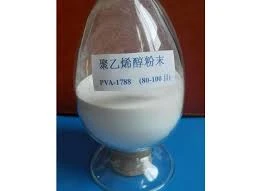The Versatility and Applications of Hydroxypropyl Methylcellulose (HPMC)
Hydroxypropyl Methylcellulose (HPMC) is a water-soluble polymer derived from cellulose, a natural polymer obtained from plant materials. It is a highly versatile compound with diverse applications across various industries, including food, pharmaceuticals, cosmetics, and construction. This article explores the properties, production, applications, and benefits of HPMC.
Properties of HPMC
HPMC is known for its thickening, emulsifying, and film-forming properties. Its solubility in water allows it to form clear and viscous solutions, which makes it ideal for numerous applications. The degree of hydroxypropyl substitution and methoxy substitution can be modified during its synthesis, making it possible to tailor its viscosity and other properties according to specific needs.
Because of its non-toxic and biodegradable nature, HPMC is considered safe for use in food products and pharmaceuticals. Its ability to resist temperature changes and maintain stability in varying pH levels makes it a popular choice for formulations requiring consistent performance.
Production of HPMC
The manufacturing process of HPMC involves several steps. Initially, cellulose is derived from wood pulp or cotton linters. This cellulose is then reacted with propylene oxide and methyl chloride under controlled conditions. This process introduces hydroxypropyl and methyl groups into the cellulose structure, enhancing its solubility and functional properties. The final product is then dried and powdered to obtain the desired particle size for different applications.
Applications of HPMC
1. Pharmaceuticals HPMC is widely used as an excipient in the pharmaceutical industry. It acts as a binder in tablet formulations, ensuring that the active ingredients are cohesively held together. Furthermore, its gel-forming ability is employed in controlled-release drug formulations, providing a mechanism for delaying the release of the active ingredients. HPMC is also utilized in ophthalmic formulations due to its exceptional lubricating properties, improving viscosity and stability in eye drops.
hydroxypropyl methyl cellulose (hpmc)

2. Food Industry In food applications, HPMC functions as a thickener, emulsifier, and stabilizer. It enhances the texture and mouthfeel of various products such as sauces, dressings, and dairy items. Additionally, HPMC is often used in gluten-free baking, as it helps improve dough elasticity and structure, thereby mimicking the properties of gluten.
3. Cosmetics and Personal Care HPMC is prevalent in cosmetic formulations due to its ability to improve the viscosity of creams and lotions. It is also used in shampoos and conditioners to enhance texture and performance. Furthermore, HPMC serves as a film-forming agent in various cosmetic products, providing a protective barrier on the skin and hair.
4. Construction In the construction industry, HPMC is utilized as a crucial additive in cement and gypsum-based products. It enhances workability, improves adhesion, and extends the open time of mortars and plasters, making it easier for professionals to work with these materials. Its water-retention properties also help prevent the drying out of these materials too quickly, promoting better performance and durability of the finished products.
Benefits of HPMC
HPMC offers numerous benefits across its various applications. Its ability to improve texture and stability has made it a favored ingredient in many formulations. In pharmaceuticals, its role as a non-toxic excipient ensures patient safety, while in food, it enhances the overall sensory experience for consumers. Moreover, the growing demand for natural and plant-based ingredients has propelled the popularity of HPMC, particularly as consumers become more conscious of their choices.
Additionally, HPMC can enhance the performance characteristics of construction materials, leading to increased efficiency and longevity, essential factors in modern building practices. Its versatility and adaptability ensure that it remains a crucial ingredient in a wide array of products across industries.
Conclusion
In conclusion, Hydroxypropyl Methylcellulose (HPMC) is a multifunctional polymer with extensive applications across diverse sectors. Its unique properties, safety profiles, and adaptability make it indispensable in pharmaceuticals, food, cosmetics, and construction. As industries continue to innovate and develop new formulations, HPMC is likely to play an increasingly pivotal role, further showcasing its versatility and importance in modern applications.
-
Rdp Powder: Key Considerations for Wholesalers in the Building Materials IndustryNewsJul.08,2025
-
Key Considerations for Wholesalers: Navigating the World of Hpmc - Based ProductsNewsJul.08,2025
-
Hpmc Detergent: Key Considerations for WholesalersNewsJul.08,2025
-
Key Considerations for Wholesalers: China Hpmc For Tile Adhesive, Coating Additives, Concrete Additives, and MoreNewsJul.08,2025
-
Crucial Considerations for Wholesalers: Navigating the World of Construction MaterialsNewsJul.08,2025
-
Key Considerations for Wholesalers Sourcing Additive For Cement, Additive For Concrete, Additive For Putty from Additive Manufacturer Shijiazhuang Gaocheng District Yongfeng Cellulose Co., Ltd.NewsJul.08,2025




